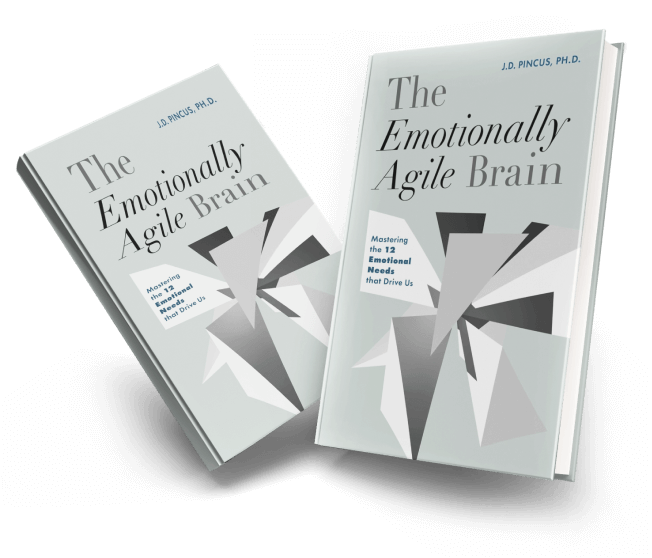Introduction: The Hidden Forces Behind Our Decisions
We all like to believe that we make rational, well-reasoned decisions. Whether choosing a career, investing in a business, or deciding how to handle a difficult relationship, we often assume we’re acting logically. Traditional decision-making models, from Expected Utility Theory to Dual-Process Thinking, suggest that we weigh pros and cons, analyze risks, and ultimately make the “best” choice.
Listen to the Podcast
But real-life decision-making is rarely that straightforward. Emotions, cognitive biases, and unmet psychological needs often guide our choices more than we realize. Even the most calculated business or personal decisions are shaped by the emotional drivers beneath the surface.
This is where AgileBrain comes in. By integrating emotional intelligence and neuroscience into decision-making, AgileBrain helps individuals recognize the emotional needs driving their choices and improve problem-solving outcomes.
In this article, we’ll compare traditional decision-making methods with the AgileBrain approach, exploring how emotional insights lead to better choices, fewer biases, and more strategic problem-solving.
Traditional Decision-Making: Strengths and Limitations
Decision-making models have long attempted to explain how we navigate choices. Below are some of the most influential theories:
Expected Utility Theory (EUT) – The Rational Choice Model
Developed in the 1940s, Expected Utility Theory (EUT) assumes that individuals make choices by assigning numerical values to all possible outcomes and selecting the option with the highest expected utility (i.e., benefit).
- Strengths: This model is widely used in economics, finance, and risk analysis because it provides a structured way to evaluate options.
- Limitations: Emotions and biases are ignored—this model assumes people have complete information, unlimited cognitive ability, and no emotional influence on their choices.
A student choosing between two job offers would, under EUT, calculate the salary, benefits, and promotion opportunities and take the one with the highest perceived value. But in reality, stress, fear of change, or a deep need for purpose might push them toward a different choice.
Heuristics and Biases (Kahneman & Tversky, 1979)
Psychologists Daniel Kahneman and Amos Tversky showed that humans rely on mental shortcuts (heuristics) that often lead to predictable biases.
- Strengths: This model recognizes that people do not always act rationally and that decision-making is influenced by psychological patterns.
- Limitations: It explains why we make biased decisions but does not provide a structured approach to overcoming these biases.
A manager hiring a new employee might favor a candidate who reminds them of a past success (representativeness heuristic) rather than objectively assessing skills.
Dual-Process Thinking (Kahneman, 2011) – Thinking Fast and Slow
This theory divides human thinking into two systems:
System 1 – Fast, intuitive, emotion-driven decisions (useful in emergencies but prone to errors).
System 2 – Slow, rational, analytical thinking (logical but mentally exhausting).
- Strengths: Recognizes that decision-making is both emotional and rational.
- Limitations: It does not offer a clear way to control the relative influences of use System 1 vs. System 2 processes.
When asked to donate to a charity, System 1 may make an impulsive emotional decision to contribute, while System 2 would analyze the financial impact before acting.
A New Approach to Decision-Making and Problem-Solving using AgileBrain
Understanding the Three Levels of Emotional Needs in Everyday Life
Every day, we face decisions—big and small—that shape our lives. Whether it’s deciding on a career move, handling conflict in a relationship, managing school stress, or setting personal goals, the choices we make are often influenced by underlying emotions and unmet needs rather than pure logic.
When problems arise—challenges at work, difficulties in relationships, or feeling stuck in life—we often react based on our ephemeral in-the-moment feelings rather than deeply understanding what’s driving those reactions.
AgileBrain provides a powerful framework for navigating personal decision-making and problem-solving by helping individuals recognize which emotional needs are activated and how to address them effectively.
Let’s explore how unmet emotional needs influence personal decisions and problem-solving across the three levels of the AgileBrain Framework.
The Foundational Level
The Bedrock of Decisions and Stability in Problem-Solving
The Foundational level represents core emotional needs related to security, independence, stability, and fairness. When these needs are unmet, individuals and teams react emotionally rather than rationally, leading to defensive decision-making and ineffective problem-solving.
The four key emotional needs at this level:
How This Affects Decision-Making and Problem-Solving:
AgileBrain Application
By assessing which Foundational needs are activated, AgileBrain helps individuals and teams distinguish between emotional reactivity and logical decision-making.
The Experiential Level:
How Emotional Engagement Shapes Decision-Making and Everyday Problem-Solving
The Experiential level relates to our day-to-day emotional engagement and interactions. These needs influence how we process challenges, engage in teamwork, and navigate daily decisions.
The four key emotional needs at this level:
How This Affects Decision-Making and Problem-Solving:
AgileBrain Application
By understanding which Experiential needs are active, individuals can recognize when burnout, lack of connection, or inauthenticity is affecting their ability to make clear decisions or why they might be disengaged, distracted, or making decisions that lack alignment with their values.
The Aspirational Level:
Growth-Oriented Decision-Making and Transformational Problem-Solving
The Aspirational level represents higher-order emotional needs that drive motivation, fulfillment, and long-term success. When these needs are met, individuals strive for meaningful achievements and approach problem-solving with innovation and purpose.
The four key emotional needs at this level:
How This Affects Decision-Making and Problem-Solving:
AgileBrain Application
AgileBrain helps individuals identify whether problem-solving challenges stem from a lack of motivation, fear of failure, or the absence of a compelling purpose.
Applying AgileBrain to Decision-Making and Problem-Solving
Understanding how your emotional needs influence decision-making and problem-solving is the first step toward making more aligned, effective, and fulfilling choices. But how do you actually apply AgileBrain insights in everyday life?
Follow this four-step process to identify emotional activation, reframe problems, align solutions, and track progress.
Identify the Emotional Activation Behind the Issue
Before setting goals, take time to reflect on which emotional needs feel most unfulfilled. AgileBrain’s neuroscience-based exercise helps identify areas of emotional activation, giving insight into what is driving (or blocking) motivation.
How to Do This:
Use self-reflection questions:
Pinpoint the emotional level involved:
Reframe the Problem with Emotional Awareness
Many problems appear external (bad boss, school stress, relationship struggles), but when you dig deeper, the real challenge often stems from an unmet emotional need within you. Instead of reacting impulsively, reframe the situation by seeing the emotional layer beneath it.
How to Do This:
Challenge initial assumptions:
Reframe the challenge:
Align Solutions with Emotional and Logical Needs
Once you understand the emotional why behind a problem or decision, the next step is to create solutions that address BOTH practical and emotional needs.
How to Do This:
Track Emotional Activation Over Time
Decision-making and problem-solving aren’t one-time events—they’re ongoing processes that require checking in with your emotions. AgileBrain helps individuals track emotional activation over time, ensuring that choices remain aligned with personal growth and well-being.
How to Do This:
Create a reflection habit – Once a week, ask:
Adjust your strategy based on emotional shifts – If a solution isn’t working, revisit your emotional activation and make changes.
Final Thoughts: Making Smarter, Emotionally-Aware Decisions & Solving Problems More Effectively
The key to solving life’s challenges isn’t just logic—it’s understanding yourself. AgileBrain gives you that insight. By understanding emotional activation at the Foundational, Experiential, and Aspirational levels, individuals and organizations can make better decisions and solve problems at their root.






